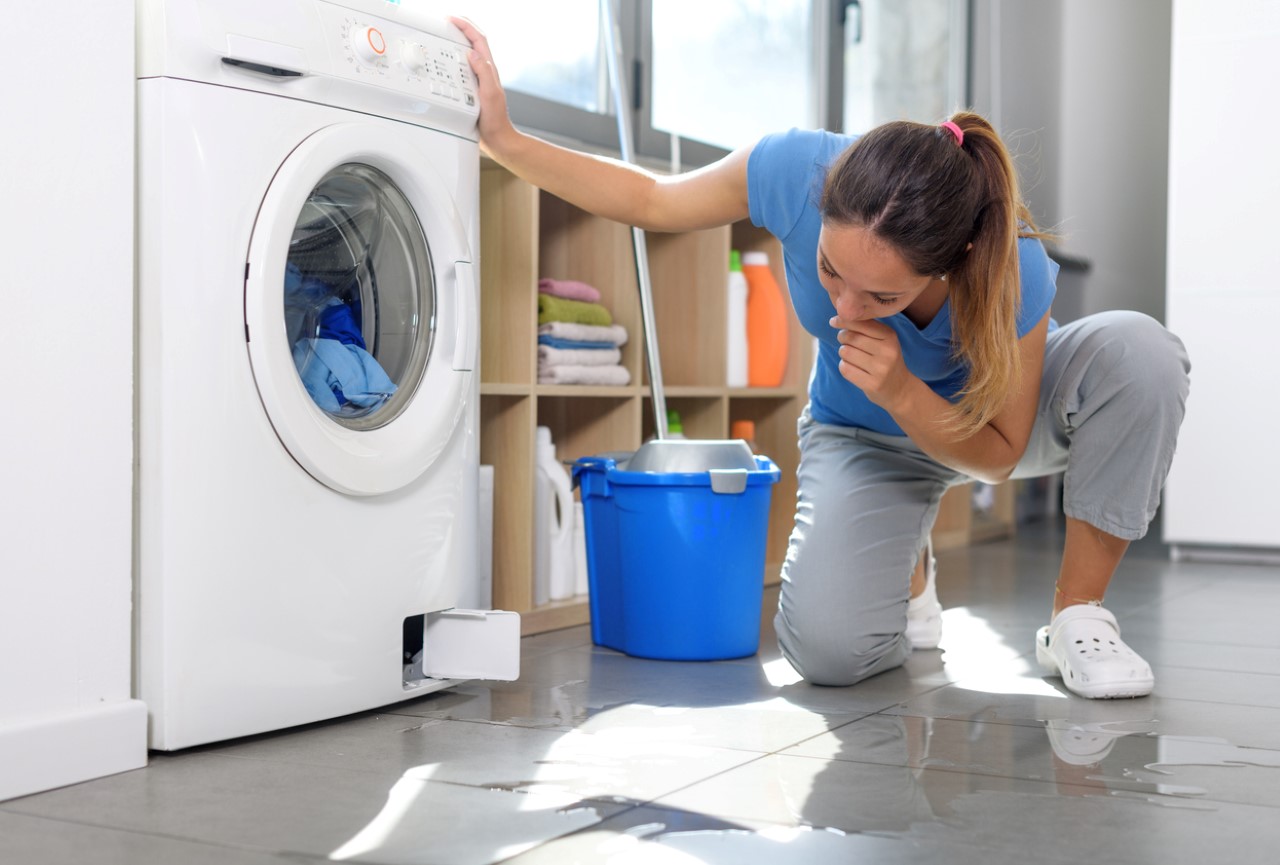Should You Fix or Replace Your Washing Machine?
Reading this article may help you decide whether you want to repair a washing machine that has always served you well or whether it is wise to obtain a different one due to it being a headache to have to deal with daily. A washing machine makes a huge difference to our washing convenience, so every time this product is faulty, certain factors such as cost of repair, energy consumption and the lifespan of the washing machine should be taken into account.
Do you have to spend money on repairs more often than you can count it? Does the machine's energy efficiency make continuous maintenance justified? If you buy a more recent model that might eventually save you utility costs? This tutorial will lead you through typical washing machine problems, how to diagnose them, and assist you in deciding whether upgrading to a new machine is the better option or whether fixing your present one is worth it. Armed with the correct knowledge, you will be able to decide the best course of action fits your house and financial situation.
Common Washing Machine Problems and What They Mean
Knowing the issue when your washing machine breaks down will help you to fix it. These are some of the most common problems homeowners deal with, together with possible consequences for your washer.
Noisy Operation
One frequent complaint that can indicate several underlying issues is a noisy washing machine. If your washer generate squeaking, grinding, or pounding noises, these could be the result of an imbalanced load, damaged drum bearings, or loose internal components.
Unbalanced loads arise from uneven distribution of clothing inside the drum, which causes it to shake and produce noise during the spin cycle. Redistributing the laundry fairly will help to solve this problem easily. Conversely, worn drum bearings are a more major problem needing professional replacement. Within the machine, loose screws or bolts can also produce noises; hence, they should be tightened to restore smooth operation.
Water Leaks
Water leaks around the washing machine might point to a number of problems including a clogged drain pump, damaged door seals, or broken hoses. Hoses can crack or degrade with time, causing leaks. Changing these hoses is easy fix.
Another often occurring source of leaks, particularly in front-loading machines, are worn door seals. During washing and spinning cycles, these seals retain water within the drum. If they be damaged or corroded, replacement is absolutely necessary. Leaks can also arise from blocked drain pumps brought on by lint or coins. Routine pump cleaning helps avoid this problem.
Failure to Spin or Agitate
If a washing machine not spin or agitate, the cause may be a damaged drive belt, motor malfunction, or a faulty lid switch. The drum won't move if the drive belt, which spins it, is worn-out or broken. Often a reasonably affordable solution is replacing the belt.
Given they call for skilled repair or replacement, motor issues can be more costly to fix. Furthermore preventing the machine from spinning as a safety precaution is a malfunctioning lid switch. Usually a fast and reasonably priced fix is replacing the switch.
Poor Drainage
If your washer fail to adequately drain water, your clothing may remain soaking wet following a cycle. Often the reason of this problem is a broken drain pump or blocked filters. Over time lint and trash can plug filters, therefore limiting water flow. Regular cleanings of these filters help to fix drainage issues.
Conversely, a broken drain pump might have to be replaced or fixed. Constant drainage difficulties could point to more major internal faults deserving of equipment replacement.
Error Codes
Many modern washing machines show error codes to signal particular faults. From basic repairs like resetting the system to more complicated problems needing professional assistance, these codes can enable you diagnose problems fast. To properly understand error codes from your equipment, always refer to its user manual.
When Should You Repair Your Washer?
When the issue is minor, the machine is very new, or the cost of repairs is reasonable, fixing your washing machine is usually the best option. These are some situations in which repair is the appropriate choice.
Affordable Repairs for Minor Issues
Many washing machine issues, including changing hoses, cleaning clogged filters, or repairing door seals, are low cost to solve. Without a large financial outlay, these little fixes can greatly increase the lifetime of your washer.
For instance, repairs of a leaky hose or a malfunctioning lid switch usually run less than $150. These problems are worth tackling, particularly if the machine is in generally good running order.
Age of the Washer: Less Than 10 Years Old
Often worth fixing are washing machines less than 10 years old. These appliances are meant to last between 10 and 15 years, hence a machine under 10 years old most certainly has a lot of life left. Over time, investing in repairs for a rather new appliance will save money over purchasing a new one.
Warranty Coverage
Repairing your washing machine could cost next to nothing if it is still covered by an extended service plan or under warranty. This is a reasonable choice as warranties usually cover particular repairs, such motor replacements or electrical problems. Before selecting whether to repair or replace your washer, always review the warranty conditions.
When Should You Replace Your Washer?
Although repairs can usually prolong the life of your washing machine, occasionally replacement is the more sensible and affordable option.
Frequent or Expensive Repairs
It's time to think about a replacement if your washing machine calls for regular maintenance or if the cost of one repair exceeds half of the price of a new machine. Repairing an aging washer for hundreds of dollars might rapidly mount up and make a new purchase more cost-effective.
Energy Efficiency of Modern Washers
Changing to a contemporary washing machine might save a lot of water and electricity. Advanced technology in new models consumes less water and power per load, therefore reducing utility costs. Although a new washer's upfront cost could be more, long-term utility savings help to offset this outlay.
Age of the Washer: Over 10 Years Old
Older than ten-year-old washing machines are less dependable and efficient than more recent models. These vintage appliances are more likely to break down and usually lack the energy-saving qualities of contemporary equipment. Changing an outdated washer for a new unit can lower maintenance expenses and improve performance.
Environmental Benefits of Replacing Old Models
Changing an outdated washing machine with a new, energy-efficient model will greatly lessen the environmental effect of your home. Modern washers cut your carbon footprint by using less water and power, so helping to preserve natural resources.
Cost Comparison: Repair vs. Replace
Whether you should fix or replace your washing machine mostly depends on cost. Let's separate the usual expenses related to these choices.
Typical Repair Costs for Common Issues
Repair costs can vary depending on the problem:
-
Replacing a drive belt: $100–$200
-
Fixing a pump: $150–$300
-
Clearing a clogged filter: $80–$150
For more modern machinery, these expenses usually pay off the investment. Frequent repairs, however, might rapidly become uneconomical for older washers.
Average Cost of a New Washing Machine
The model and features of a new washing machine determine their cost:
-
Basic models: $400–$600
-
Mid-range models: $700–$1,000
-
High-end models: $1,200+
When weighing these expenses, take long-term savings in water and energy bills a new, energy-efficient washer can offer into account.
Factors to Consider When Making the Decision
Energy Consumption
Older washers run noticeably higher on water and electricity. Over time, an energy-efficient replacement will pay for itself and help to reduce your bills.
Performance Needs
Replacing your current washer could be required if size or performance restrictions prevent it from meeting your laundry needs.
Safety Concerns
Broken parts might provide safety risks including electrical problems or leakage. If your washer provide any risk, replacing is the better choice.
Tips for Prolonging the Life of Your Washing Machine
Frequent maintenance helps your washing machine perform as it should and avoids typical problems. The lifetime of the machine can be greatly extended with simple actions including cleaning the drum and filters, hose inspection, and avoidance of overloading.
Moreover, choosing the right kind and concentration of detergent helps to avoid clogs and residue development, therefore guaranteeing best performance. Following these guidelines can help you to reduce repair expenses and postpone the replacement need.
Contact Us for Washer Repair or Replacement
RightFix can assist you in deciding whether to replace or repair your washing machine. Our skilled experts focus in promptly and reasonably diagnosing and fixing washing machine problems.
We take great satisfaction in providing you with honest guidance and professional expertise to enable you to choose the best course of action for your budget and house. We are here to help you at every stage of the process whether your need is for a repair or you are ready to make a new washer investment.
RightFix now provides dependable washing machine repair and replacement services. Let us assist you in bringing efficiency and ease back into your laundry schedule.
You may boldly determine whether to repair or replace your washing machine by considering the age, energy efficiency, and cost of your device.
Location we Service
- Ajax
- Alliston
- Aurora
- Bolton
- Bradford
- Brampton
- Brantford
- Burlington
- Caledon
- Cambridge
- Concord
- East York
- Etobicoke
- Georgetown
- GTA
- Guelph
- Halton Hills
- Hamilton
- Innisfil
- Keswick
- King City
- Kitchener
- Kleinburg
- Maple
- Markham
- Milton
- Mississauga
- New Tecumseth
- Newmarket
- North York
- Oakville
- Orangeville
- Oshawa
- Pickering
- Richmond Hill
- Scarborough
- Schomberg
- Stouffville
- Thornhill
- Toronto
- Unionville
- Uxbridge
- Vaughan
- Waterloo
- Whitby
- Woodbridge






















